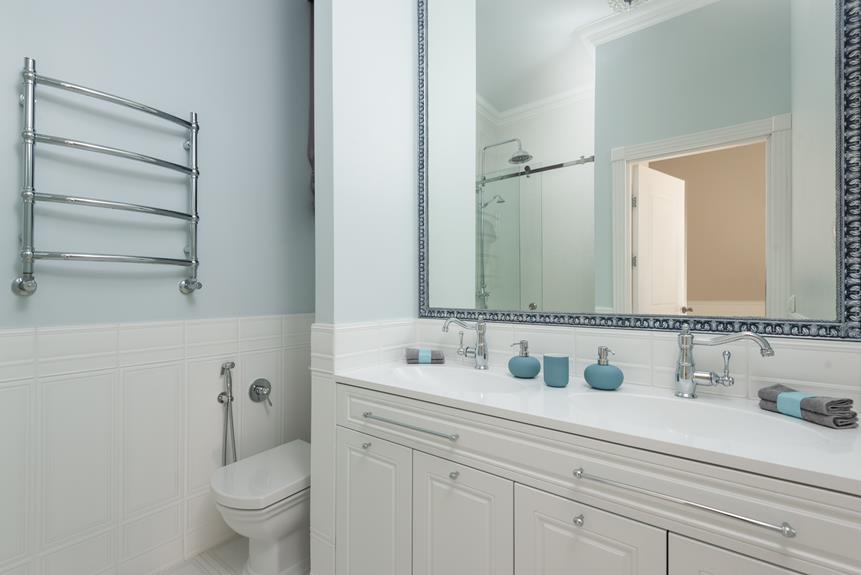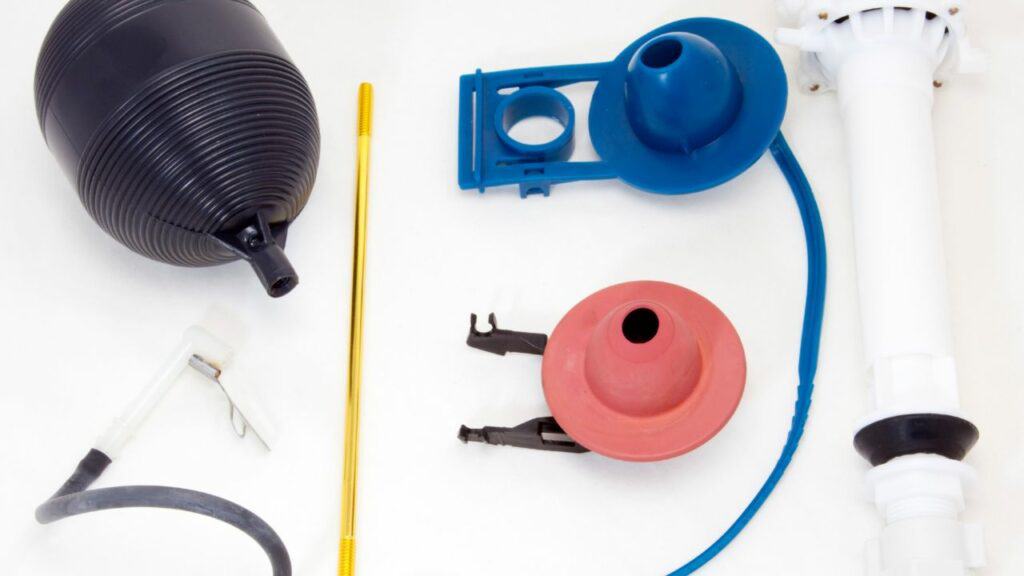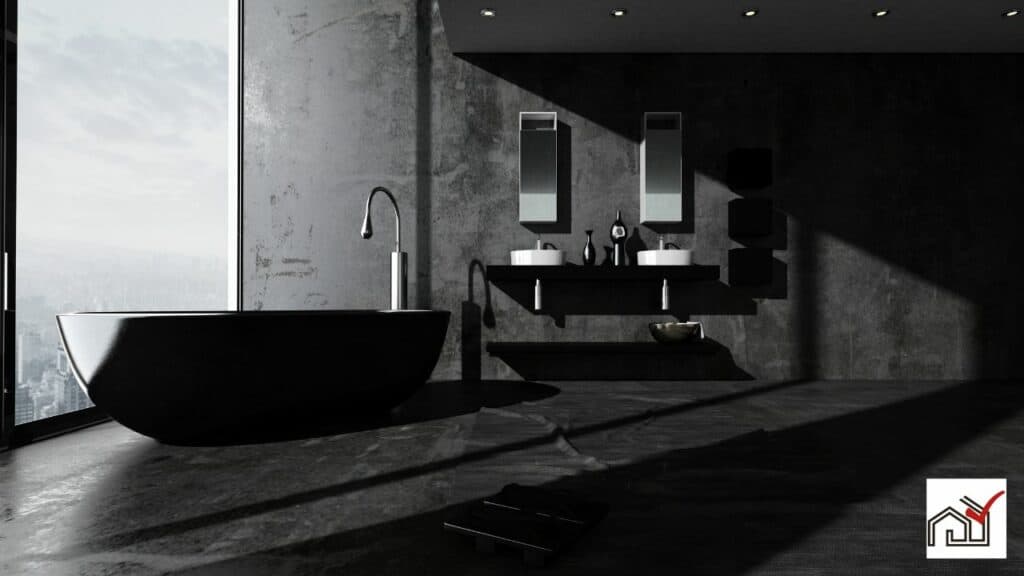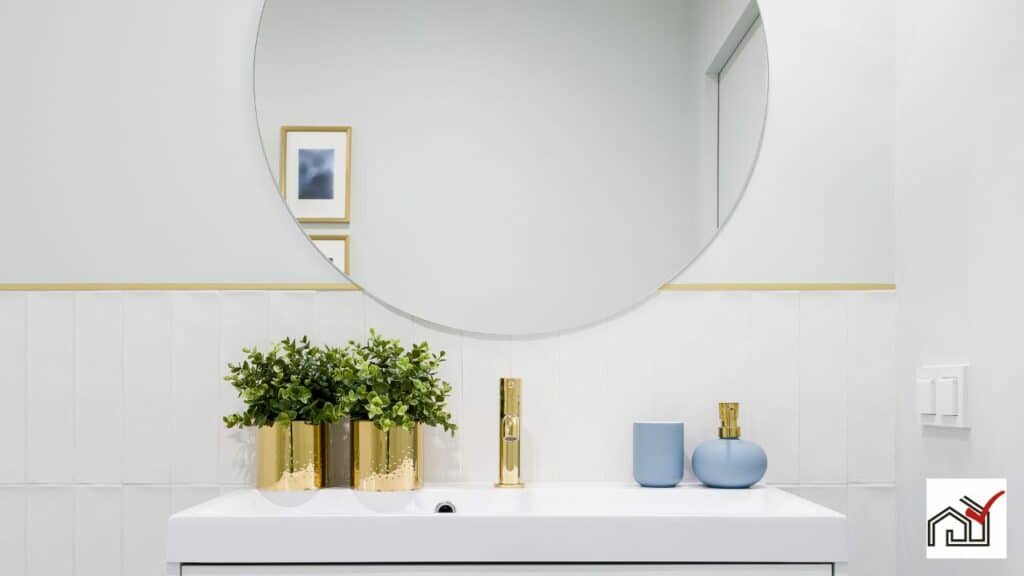Stainless steel is known for its corrosion resistance, making it a common choice for bathroom cabinets. The material contains chromium, which forms a protective layer to prevent rust.
However, stainless steel is not completely rust-proof. In a bathroom, continuous exposure to moisture and other factors can eventually cause rust. To prevent this, it is important to know the grade of stainless steel used, such as 304 or 316, and to maintain it properly.
This text will discuss what affects the corrosion resistance of stainless steel bathroom cabinets, how to maintain them, and ways to preserve their appearance and durability.
Stainless Steel Properties
Stainless steel is known for its corrosion resistance, but it can still rust in certain bathroom conditions. Its popularity for such use is due to its ability to handle moisture and its low reactivity to many substances. However, it isn't completely immune to rust and corrosion.
The rust resistance of stainless steel comes from a chromium oxide layer that forms on the surface when the steel's chromium reacts with air oxygen. This layer protects the metal underneath. Without proper maintenance, this protective layer can be damaged, leading to rust.
To maintain the chromium oxide layer, regular cleaning is crucial. Bathroom contaminants like chlorides from cleaners and saline from water can harm this layer if not cleaned off. Even high-quality stainless steels like grades 304 and 316 can corrode over time under harsh conditions.
For bathroom cabinets, selecting the right stainless steel grade and surface finish is important to ensure durability and resistance to rust. The right choice and maintenance will help maintain the cabinets' resistance to rust, durability, and visual appeal.
Bathroom Environment Factors
Bathroom conditions, which are often humid and salty, can increase the likelihood of rust on stainless steel cabinets. While stainless steel resists corrosion, it is not completely immune to moisture and salt, particularly where oxygen is scarce.
High humidity in bathrooms can weaken the protective chromium oxide layer on stainless steel, leading to corrosion. This problem is worse in areas with inadequate ventilation as moisture remains on surfaces, including stainless steel cabinets. Good ventilation is important to lower moisture levels and reduce rust risk.
Regular cleaning and drying of stainless steel surfaces are crucial to prevent rust. Abrasive cleaners should be avoided as they can harm the steel's surface and increase rust susceptibility. Gentle, stainless steel-specific cleaners are recommended.
Applying a protective coating or sealant can further protect against corrosion in bathroom environments. These products enhance stainless steel's natural rust resistance, helping cabinets stay functional and visually appealing longer.
Corrosion-Resistant Grades
Stainless steel grades 304 and 316 are used in bathroom cabinets for their corrosion resistance. These grades contain higher chromium and added nickel, forming a protective layer against rust.
Grade 304 has about 18% chromium and 8% nickel, suitable for typical humidity and water exposure. It is less effective in coastal areas due to higher salt levels.
Grade 316 contains around 16% chromium, 10% nickel, and 2% molybdenum, enhancing its resistance to salt-induced corrosion. It is recommended for coastal locations or for increased durability.
Both grades can rust over time, but regular cleaning and drying can extend their lifespan. Expert advice can help choose the right grade and maintain the cabinets' condition.
Maintenance Best Practices
To maintain stainless steel bathroom cabinets and prevent rust, regular cleaning with a mild detergent and warm water is advised. Use soft cloths or sponges to avoid scratches and always dry the surfaces completely.
For rust spots or tough stains, cleaners containing oxalic acid are effective, and products like WD-40 can protect against moisture. Wipe in the direction of the metal grain to maintain the finish.
Regular checks for rust and prompt treatment are important. Applying a stainless steel sealant can offer additional protection and help ensure longevity.
Cleaning Techniques
To clean stainless steel bathroom cabinets, use a methodical approach to prevent rust and keep their shine. Regular cleaning maintains the metal's integrity.
Start with warm water and a mild detergent to remove daily dirt and protect the stainless steel's surface layer. After using the cleaning solution, rinse the cabinets with clean water and dry them completely with a soft cloth to prevent oxidation.
If rust spots appear, apply a baking soda and water paste with a soft brush to remove rust without harming the surface. For tougher rust, a cleaner with oxalic acid may be effective, but use it cautiously and follow the manufacturer's instructions.
These methods help preserve the condition and longevity of stainless steel bathroom cabinets.
Protective Measures
To prevent corrosion, it is important to apply a protective sealant to stainless steel bathroom cabinets. A sealant creates a barrier against water and contaminants, reducing the risk of rust. It is necessary to use a sealant made for stainless steel to ensure it works properly.
Regular cleaning is also key to prevent rust on stainless steel cabinets. Use suitable cleaners and dry the cabinets well to stop moisture and corrosive substances from building up. Do not use abrasive cleaners or tools that could scratch the steel and make it more susceptible to corrosion.
Good ventilation in the bathroom lowers humidity and moisture, which can cause rust. Using an exhaust fan or opening a window can help keep the area dry and protect the cabinets.
Inspect the cabinets often for any signs of rust or corrosion. Addressing these issues early can stop small areas of rust from becoming larger problems.
Following these steps will help maintain the stainless steel cabinets and ensure they last longer.
Repairing Minor Rust
To remove minor rust from stainless steel bathroom cabinets, follow these steps:
- Create a paste with baking soda and water.
- Apply the paste to the rust spots and leave it for a few minutes.
- Gently scrub the area with a soft brush or cloth, being careful not to scratch the cabinet's surface.
For maintenance, make sure to:
- Clean and dry the cabinets regularly to prevent new rust from forming.
- Use gentle detergents and warm water for daily cleaning to maintain the cabinet's condition.
If the rust is stubborn, consider:
- Using a cleaner with oxalic acid, which is more effective against rust and safe for stainless steel.
Once the rust is removed, protect the cabinet by:
- Applying a sealant designed for stainless steel.
- This will help prevent future rust and improve the cabinet's appearance.
Following these steps will keep your stainless steel bathroom cabinets in good condition.
Long-Term Durability
Stainless steel bathroom cabinets have a reputation for being durable and resistant to corrosion. With proper care, they can remain in excellent condition for many years. However, it's important to note that while stainless steel is highly resistant to rust, it is not completely immune to environmental factors that can damage its protective oxide layer and shorten its lifespan. Factors such as low oxygen, high salinity, or poor air circulation can all contribute to the deterioration of stainless steel.
To ensure the longevity of stainless steel cabinets, regular cleaning and maintenance are essential. This is especially important in humid environments like bathrooms, where moisture can increase the risk of rust. Good ventilation is crucial to lower moisture levels and reduce the chances of corrosion.
In addition to regular cleaning and ventilation, applying a protective coating or sealant to the stainless steel can provide an extra layer of defense against rust. This can significantly extend the life of the cabinets and enhance their durability. To ensure the best care for your stainless steel cabinets, it is advisable to consult with a professional who is knowledgeable about stainless steel maintenance and protection. They can provide guidance that is specific to your bathroom's conditions and usage.




